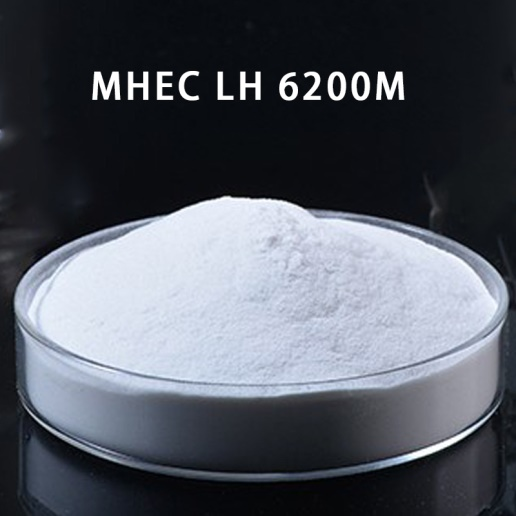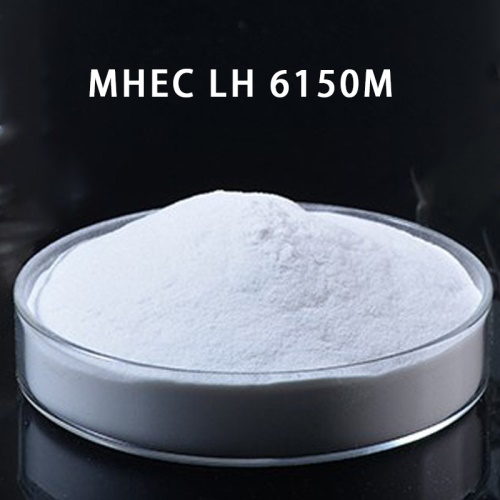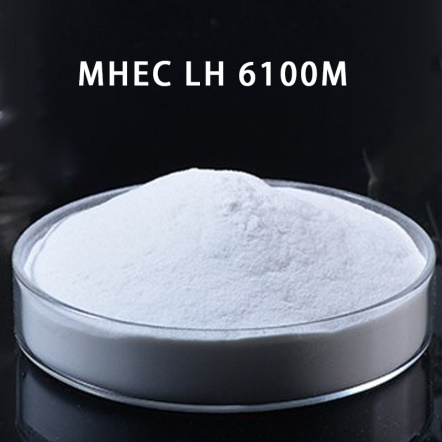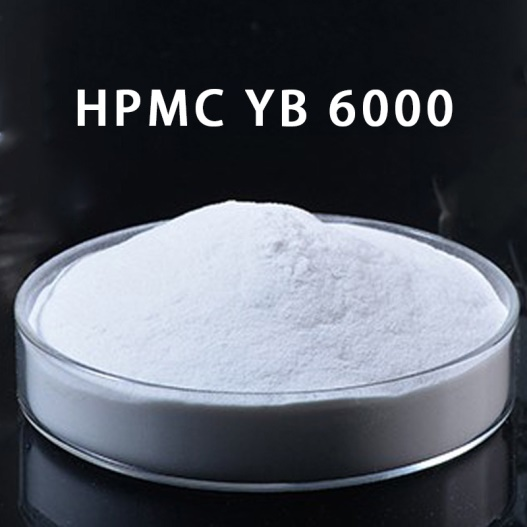-

MHEC LH 6150MS
EipponCell® MHEC LH 6150M is derived from cotton and wood by undergoing a process involving alkalization, ethylene oxide, and methyl chloride etherification.
MHEC is a type of non-ionic cellulose mixed ether, characterized by its molecular structure [C6H7O2(OH)3-m-n(OCH3)m(OCH2CHOHCH3)n]x. The varying proportions of methoxyl and hydroxyethyl groups in MHEC result in different viscosities and levels of product substitution uniformity. This leads to the creation of different varieties and grades of products with distinct performance characteristics.
MHEC exhibits favorable properties such as dispersing, emulsifying, thickening, bonding, water-retention, and gel-retention. It is soluble in water and can also be dissolved in ethanol and acetone below 70% concentration. Additionally, the unique structure of MHEC allows for direct solubility in ethanol.
Where to buy Cas MHEC LH 6150MS
-

MHEC LH 6100MS
MHEC LH 6100MS, which belong to a class of cellulose ethers and their derivatives that lack dissociable groups on their structural units. In comparison to ionic ether products, nonionic cellulose ethers exhibit higher effectiveness in thickening, emulsifying, film forming, acting as protective colloids, and retaining moisture. They demonstrate superior performance in terms of adhesion, anti-allergy properties, and find extensive application across various industries such as oil field exploration, latex coatings, polymer polymerization, building materials, daily chemicals, food, pharmaceuticals, papermaking, textile printing, and dyeing.
Where to buy Cas MHEC LH 6100 MS
-

MHEC LH 6200M
KimaCell® MHEC MH200M is a significant cellulose derivative known as methyl hydroxyethyl cellulose, which finds extensive applications in various industries including medicine, hygiene, daily chemical industry, papermaking, food, medicine, construction, and materials. The development and utilization of cellulose ether hold great importance in effectively utilizing renewable biomass resources and advancing the development of new materials and technologies.
Cellulose ether is typically dissolved in water, forming a colloidal solution where its viscosity is determined by the degree of polymerization of the cellulose ether. This solution contains hydrated macromolecules. Due to the entanglement of these macromolecules, the flow behavior of cellulose ether solutions differs from that of Newtonian fluids and instead exhibits shear-dependent behavior. The viscosity of the solution increases rapidly with increasing concentration, owing to the macromolecular structure of cellulose ether. Conversely, it decreases rapidly with increasing temperature.
Where to buy Cas MHEC LH 6200M
-

MHEC LH 6150M
EipponCell® MHEC LH 6150M methyl hydroxyethyl cellulose is widely recognized as the preferred additive for construction wall putty due to its exceptional water retention performance. By effectively retaining moisture, this admixture extends the working time, resulting in improved construction performance and enhanced work efficiency. In a systematic study conducted on interior wall environmental protection putty containing diatomite as the primary functional filler, the impact of different viscosities of HPMC and the amount of putty on various performance aspects was carefully examined. The research revealed that the bond strength of the wall putty initially increases with the dosage of MHEC, but beyond a certain point, it starts to decrease. This finding emphasizes the significance of optimizing the MHEC dosage to achieve the desired bond strength.
-

MHEC LH 6100M
EipponCell® MHEC LH 6100M, a methyl hydroxyethyl cellulose, has a significant impact on the performance of cement-based materials and presents a challenging decision in its selection process. Based on the classification of substituents according to their chemical structure, cellulose ethers can be categorized into anionic, cationic, and nonionic types. As the construction industry demands higher performance and quality for polymer cement, the inclusion of additives for its modification has become a prominent area of research. Cellulose ether, particularly, has gained widespread usage due to its water retention, thickening, retardation, and gas-related functions.
-

HPMC YB400
HPMC YB400, an industrial grade hydroxypropyl methyl cellulose used as an additive in self-leveling mortar. Among cellulose ethers, EipponCell hydroxypropyl methylcellulose HPMC YB400 is a primary additive in self-leveling floor material. Self-leveling mortar utilizes its own weight to form a flat, smooth, and strong foundation on the substrate, allowing for the laying or bonding of other materials while facilitating large-area and high-efficiency construction.
One of the key features of self-leveling mortar is its high fluidity. HPMC YB400 adds to this quality with its ability to retain water and provide bonding strength without water segregation. Additionally, HPMC YB400 offers insulation and low temperature rise, making it an excellent choice for various construction applications, particularly in ground decoration and repair projects. -

HPMC YB4000
HPMC MP4M is a construction-grade hydroxypropyl methyl cellulose used as a joint filler and crack filler. EipponCell HPMC MP4M is a low-viscosity cellulose ether with a viscosity of 4000cps. Increasing the mass fraction of HPMC hydroxypropyl methylcellulose exponentially increases the viscosity of the solution, enhancing its thickening effect for practical applications.
Where to buy HPMC YB4000
-

HPMC YB6000
HPMC YB6000 is a construction-grade hydroxypropyl methyl cellulose used as a concrete admixture. EipponCell HPMC YB6000 is a low-viscosity cellulose ether with a viscosity of 6000cps. The viscosity of cellulose ether has a direct impact on the thickening effect in mortar, although it is not entirely proportional. In particular, low-viscosity HPMC, especially modified cellulose ether, exhibits superior performance in enhancing the structural strength of wet mortar. As the viscosity increases, the cellulose ether also improves water retention properties. This means that higher viscosity HPMC provides better moisture retention in the mortar, promoting proper hydration and ensuring the desired setting and curing processes. The use of EipponCell HPMC YB6000 in concrete admixture applications offers the advantages of improved mortar strength, enhanced workability, and optimized water retention for achieving optimal concrete performance.
Where to buy YB6000
-

HPMC YB 510M
EipponCell HPMC YB510M is a medium viscosity cellulose ether. The process of cellulose ether production involves the use of refined cotton/cotton pulp/wood pulp as the primary raw material, which is alkalineized to obtain cellulose. Subsequently, propylene oxide and methyl chloride were added for etherification, resulting in the formation of cellulose ether. Known as the “industrial monosodium glutamate,” cellulose ether boasts exceptional properties, including solution thickening, excellent water solubility, suspension or latex stability, film forming capability, water retention, and adhesion.
In the case of EipponCell HPMC YB510M, it specifically serves as hydroxypropyl methyl cellulose used in water-based paints and paint removers. This cellulose ether provides valuable benefits in these applications. It aids in thickening the paint solution, ensuring proper consistency and enhanced coverage during application. In addition, it exhibits good water solubility, allowing for easy mixing and preparation of water-based paints. Cellulose ether also helps with suspension stability, preventing pigments from settling and ensuring a uniform distribution throughout the paint. And, it aids in the formation of a durable film on the painted surface, enhancing the longevity and protection of the paint.
Furthermore, EipponCell HPMC YB510M demonstrates excellent water retention, keeping the paint solution in a workable state for an extended period, reducing the risk of drying or skinning. It also provides adhesion properties, promoting strong bonding between the painted surface and the paint film, resulting in improved durability and resistance to peeling or flaking.
Where to buy Cas HPMC YB 510M
-

HPMC YB 515M
HPMC YB 515M is a specific grade of Hydroxypropyl Methyl Cellulose developed specifically for premium tile adhesives. The growing adoption and usage of tile adhesive and grout products have resulted in an increased demand for high-quality building material grade cellulose ether like EipponCell. This trend has created market opportunities for Icap to expand its production capacity in response to rising demand. According to the annual cellulose ether data, the tile adhesive grade cellulose ether produced by Yibang company is a building material grade HPMC with a gel temperature of 75°C. This gel temperature specification indicates the temperature at which the HPMC solution transitions from a liquid to a gel-like consistency. By providing a cellulose ether with a gel temperature of 75°C, Yibang company ensures that their product is well-suited for use in tile adhesive applications, providing the desired performance and functionality required for premium tile installations. With the utilization of HPMC YB 515M in premium tile adhesives, Elbaz aims to meet the increasing market demand for reliable, high-performance tile installation materials that contribute to the growth of the construction industry and enhance the overall quality and durability of tile installations. Where to buy Cas HPMCY YB 515M

